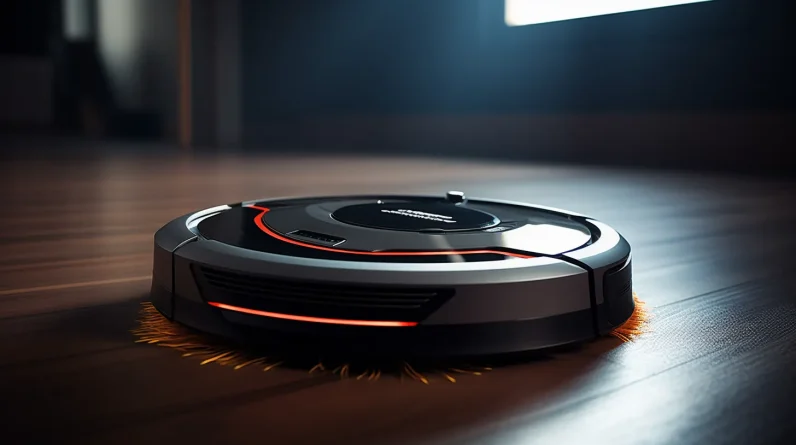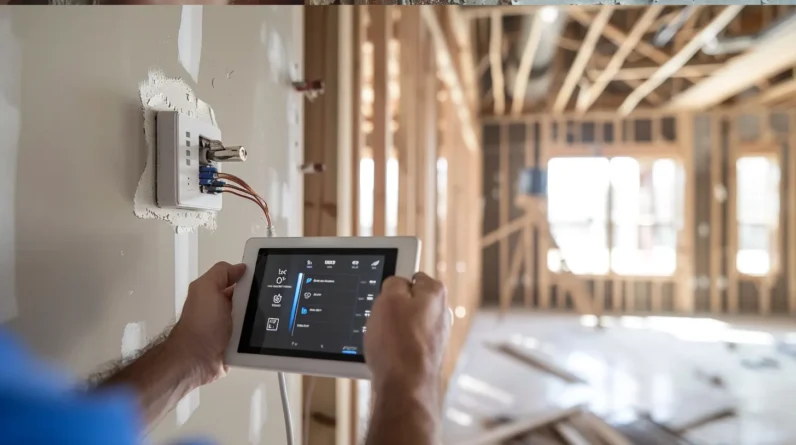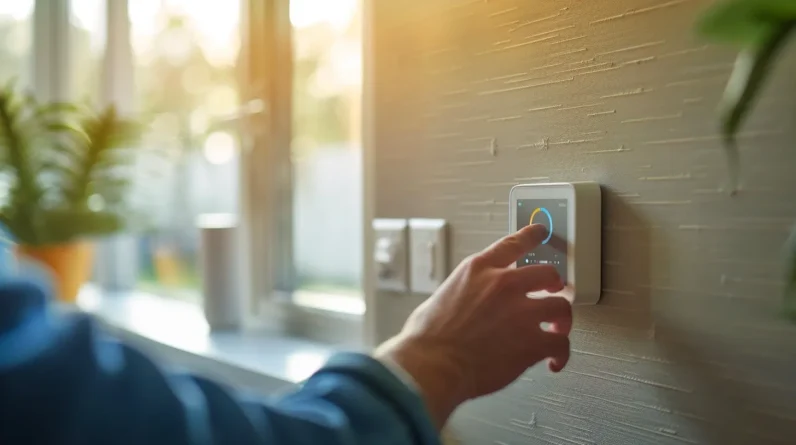
When it comes to domestic duties, the advancement of cleaning automation has made significant progress, revolutionizing everyday tasks into convenient and trouble-free experiences.
From the humble beginnings of robotic vacuum cleaners to the emergence of smart mops, this article explores the remarkable journey of cleaning automation.
By examining early innovations, advancements in navigation technology, and the rise of smart mops, we gain insight into the future trends that will continue to shape the world of cleaning automation.
Join us on this captivating journey as we unveil the fascinating evolution of cleaning automation.
Key Takeaways
– Robotic vacuum cleaners and smart mops have revolutionized cleaning automation.
– AI integration and multi-purpose robots enhance efficiency and convenience.
– Autonomous cleaning fleets optimize cleaning processes in large-scale settings.
– Cleaning tasks become more time-saving and effective with advanced technologies.
Early Innovations: The Birth of Robotic Vacuum Cleaners
The birth of robotic vacuum cleaners marked a significant milestone in the development of household cleaning automation. Robot vacuum technology revolutionized the way we approach the mundane task of cleaning our homes. These innovative devices have had a profound impact on household chores, freeing up valuable time and energy for individuals who desire more freedom in their lives.
Robot vacuum technology has transformed the cleaning industry by offering a hands-free solution to maintaining a clean home. These intelligent machines are equipped with sensors and advanced navigation systems that allow them to move seamlessly around a room, avoiding obstacles and efficiently cleaning every nook and cranny. This level of automation has drastically reduced the time and effort required for routine cleaning tasks.
The impact of robot vacuum cleaners on household chores cannot be overstated. They have alleviated the burden of manual vacuuming, making it easier for individuals to maintain a clean and tidy living space. With the ability to schedule cleaning sessions and even control the device remotely using smartphone apps, robot vacuums have given people the freedom to focus on other important aspects of their lives.
Advancements in Navigation Technology: Making Cleaning Smarter
Advancements in navigation technology have revolutionized the cleaning industry, making it smarter and more efficient. With the integration of robotic mapping and artificial intelligence, cleaning devices such as robot vacuums and smart mops have become more autonomous and effective in achieving a spotless environment.
– Robotic mapping: The incorporation of mapping technology allows cleaning devices to create a virtual blueprint of the area to be cleaned. This enables them to navigate through obstacles and efficiently cover every corner of the space.
– Artificial intelligence: By utilizing AI algorithms, cleaning robots can analyze the layout of a room and make intelligent decisions on the most efficient cleaning path. This not only saves time but also ensures thorough cleaning.
– Enhanced obstacle detection: Navigation advancements have equipped cleaning devices with the ability to detect and avoid obstacles, such as furniture or pets, ensuring a seamless cleaning experience without causing any damage or disruptions.
– Improved battery life: Navigation technology has also led to significant improvements in battery life. Cleaning devices can now intelligently manage their power consumption, allowing them to clean larger areas without the need for frequent recharging.
These advancements in navigation technology have transformed the cleaning industry, providing users with smarter and more efficient cleaning solutions. With the integration of robotic mapping and artificial intelligence, cleaning devices can now navigate and clean spaces autonomously, saving time and effort for users.
As technology continues to evolve, we can expect further enhancements in cleaning automation, making household chores even more effortless and convenient for everyone.
From Vacuuming to Mopping: The Rise of Smart Mops
An important development in cleaning automation is the emergence of smart mops, revolutionizing the way we tackle floor cleaning. Smart mops are equipped with advanced features that enhance efficiency and effectiveness in mopping tasks. These features include intelligent sensors that detect obstacles and adjust cleaning patterns accordingly, ensuring thorough coverage of the floor. Additionally, smart mops often have built-in navigation systems that enable them to map the space and create efficient cleaning routes, saving time and effort.
The benefits of automated mopping with smart mops are numerous. Firstly, it saves valuable time and energy for individuals, allowing them to focus on other tasks or activities. Smart mops also provide a more consistent and thorough cleaning performance compared to traditional mopping methods. By utilizing advanced technologies, they are capable of reaching corners and edges that are often missed by manual mopping. Moreover, smart mops often have adjustable settings, allowing users to customize the cleaning process according to their specific needs.
Future Trends: What’s Next for Cleaning Automation?
In the coming years, three major trends are expected to shape the future of cleaning automation.
Firstly, there will be increased integration of artificial intelligence with cleaning automation. With advancements in AI, cleaning automation systems are now being integrated with virtual assistants like Amazon Alexa and Google Assistant. This allows users to control and monitor their cleaning robots using voice commands or through mobile apps.
Secondly, the impact of artificial intelligence on cleaning automation will be significant. AI algorithms enable robots to learn and adapt to different cleaning tasks, improving their efficiency and effectiveness. They can analyze the environment, map out the area, and navigate obstacles seamlessly.
Thirdly, there will be a development of multi-purpose cleaning robots. Instead of having separate robots for different cleaning tasks, the future will see the emergence of multi-purpose cleaning robots. These robots will be equipped with interchangeable attachments, allowing them to perform tasks like vacuuming, mopping, and even window cleaning. This not only saves space but also provides more convenience to users.
There will be a rise in the use of autonomous cleaning fleets in large-scale commercial settings. These fleets consist of multiple robots working together to clean large areas efficiently. They can communicate with each other, coordinate their movements, and optimize their cleaning routes to minimize time and energy consumption.
The future of cleaning automation is promising, with increased integration of AI, development of multi-purpose robots, and the rise of autonomous cleaning fleets. These trends will revolutionize the cleaning industry, making cleaning tasks more efficient, convenient, and time-saving for users.
Frequently Asked Questions (FAQs)
How Do Robotic Vacuum Cleaners Detect Obstacles and Navigate Around Them?
Robotic vacuum cleaner technology utilizes various sensors, such as infrared and laser, to detect obstacles and navigate around them. By analyzing the environment, these devices can create a map and calculate the most efficient cleaning path, ensuring thorough cleaning while avoiding collisions.
Are There Any Safety Concerns or Risks Associated With Using Robotic Vacuum Cleaners?
Safety concerns and potential hazards associated with using robotic vacuum cleaners include entanglement with cords or loose clothing, falls down stairs, and damage to furniture or other objects. It is important for users to be aware of these risks and take necessary precautions.
Can Smart Mops Be Used on All Types of Flooring, Including Hardwood and Tiles?
Smart mops are effective tools for cleaning different types of flooring, including hardwood and tiles. They offer the benefit of convenience and time-saving. However, limitations may arise in terms of heavy-duty cleaning or tackling difficult stains on certain surfaces.
What Are the Main Differences Between Traditional Vacuum Cleaners and Robotic Vacuum Cleaners?
The main differences between traditional vacuum cleaners and robotic vacuum cleaners lie in their functionality and convenience. Robotic vacuum cleaners offer advantages such as automated cleaning, advanced navigation technology, and the ability to clean hard-to-reach areas. However, they also have limitations in terms of cleaning power and capacity. Technological advancements in robotic vacuum cleaners have led to improved performance and user experience. Despite their higher upfront cost compared to traditional vacuum cleaners, the convenience and time-saving benefits of robotic vacuum cleaners make them a popular choice for many households. As technology continues to evolve, the future prospects of robotic vacuum cleaners are promising, with potential advancements in cleaning capabilities and integration with smart home systems.
Are There Any Additional Features or Functions That Smart Mops Offer Besides Mopping?
Smart mops offer a range of additional features and benefits beyond just mopping. These include features such as built-in sensors for navigation, automatic water dispensing, adjustable cleaning modes, and compatibility with smart home systems for remote control and scheduling.
Conclusion
The evolution of cleaning automation has witnessed remarkable advancements. From the birth of robotic vacuum cleaners to the rise of smart mops, cleaning appliances have become smarter and more efficient.
With advancements in navigation technology, these appliances are now able to navigate and clean a space more effectively. This has led to increased convenience for users, as they no longer have to manually operate the devices or spend as much time cleaning.
This trend is likely to continue in the future, as technology continues to progress. There is the potential for even more innovative cleaning solutions to emerge, such as robots that can clean multiple surfaces or appliances that can learn and adapt to individual cleaning preferences.
As a result, the possibilities for automation in cleaning are endless. This promises a future where household chores are effortlessly taken care of by intelligent machines, allowing people to focus on other activities and enjoy more leisure time.







